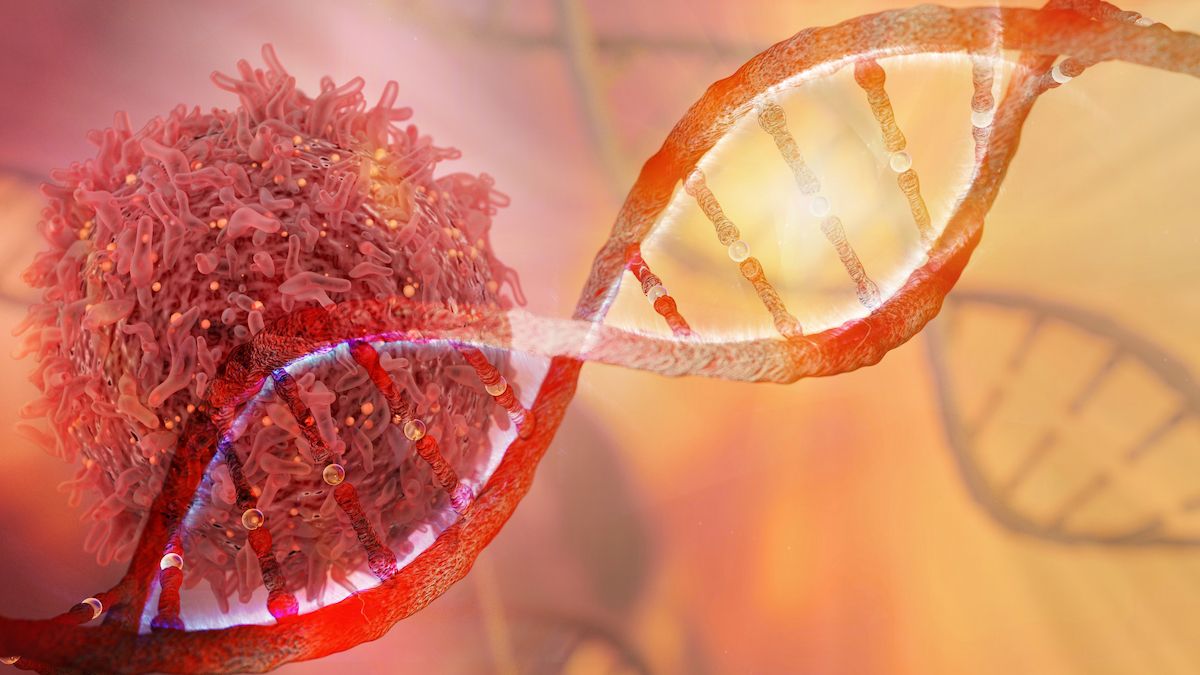Nemvaleukin Alfa Shows Promising Activity in Advanced Solid Tumors
Nemvaleukin with and without pembrolizumab yielded promising anti-tumor activity and was well tolerated in patients with advanced solid tumors.
Nemvaleukin with and without pembrolizumab yielded promising anti-tumor activity and was well tolerated in patients with advanced solid tumors.

In patients with pretreated advanced solid tumors, nemvaleukin alfa (ALKS 4230) was found to be well tolerated while showing positive anti-tumor activity, according to data from the three-part, open-label phase 1/2 ARTISTRY-1 study (NCT02799095) published in the Journal for ImmunoTherapy of Cancer.
The trial was conducted in 3 separate phases: part A assessed dose-escalation nemvaleukin alfa monotherapy for patients with advanced solid tumors including lymphomas; part B evaluated dose-expansion monotherapy for patients with advanced melanoma or renal cell carcinoma; and part C assessed combination therapy with pembrolizumab (Keytruda) for patients with any advanced solid tumor.
For part A, the main objective was the determination of the recommended phase 2 dose (RP2D) for nemvaleukin. Patients received a median of 2 treatment cycles, and the median duration of nemvaleukin monotherapy was 7.6 weeks. The maximum tolerated dose was not reached, although the maximum dose tested was 10 μg/kg. Established based on safety and pharmacokinetic data, the RP2D was 6 μg/kg per day intravenously on days 1 to 5 of a 21-day cycle.
For part B, the focus was efficacy, safety, and pharmacodynamic outcomes with nemvaleukin monotherapy. Per efficacy, at the primary analysis, confirmed overall responses were observed in 7 of 68 patients (10%; 95% CI, 4%-20%) treated with the monotherapy, and all of them were partial responses (PRs). All patients who responded had previously been treated with a PD-L1 inhibitor. Also, 44 of 68 patients (65%) had stable disease, of which 5 lasted for more than 6 months.
Per safety, at least 1 treatment-emergent adverse effect (AE) was reported by 72 patients (97%). Dose interruptions and dose reductions due to AEs were observed in 37 patients (50%) and 6 patients (8%), respectively. The most common treatment-emergent AEs were fever (65%), neutropenia (57%), and chills (47%). Of grade 3/4 treatment-emergent AEs, they were reported in 56 patients (76%), and the most common were uncomplicated neutropenia (49%) and anemia (10%). There was 1 death due to COVID-19 that was unrelated to the study treatment.
Per the pharmacodynamic analysis, during the first 2 cycles of treatment, CD8-positive T cells and NK cells expanded with a maximum fold change of 2.53 and 6.52, respectively.
For part C, the focus was on outcomes of treatment with nemvaleukin plus pembrolizumab. Per efficacy, there were 19 confirmed overall responses (13%; 95% CI, 8%-20%) among 144 patients. Of them, 5 (4%) were complete responses, and 14 (10%) were PRs. Also, 70 (49%) patients had stable disease, 15 of which were for more than 6 months.
Per safety, at least 1 treatment-emergent AE was reported in 162 patients (98%). Dose interruptions and dose reductions due to AEs occurred in 81 patients (49%) and 3 patients (2%), respectively. Of any-grade toxicities, the most common treatment-emergent AEs were chills (55%), fever (49%), and fatigue (29%). Of grade 3/4 treatment-emergent AEs, they were reported in 85 patients (52%), and the most common were neutropenia (21%) and anemia (11%). A total of 6 patients discontinued treatment due to treatment-emergent AEs. Regarding deaths, 4 were reported; 3 of which were considered unrelated to nemvaleukin and 1, due to inanition and progression of disease in a patient with pancreatic cancer, was judged by the investigator as related to nemvaleukin.
“ARTISTRY-1 demonstrated proof of the principle of nemvaleukin antitumor activity alone and in combination with pembrolizumab in a broad range of refractory, pretreated malignancies,” the study authors wrote. “The manageable safety profile enables nemvaleukin application in the majority of patients with cancer regardless of their cardiovascular fitness.”
A total of 243 patients were enrolled into the study; 46 were in part A, 74 were in part B, and 166 were in part C. Patients were screened from July 2016 to March 2023, and by March 2023, 100% of patients in part A, 96% of those in part B, and 92% of those in part C discontinued treatment, with the most common reason being progressive disease.
Patients in part B received nemvaleukin as an intravenous infusion over 30 minutes at the RP2D for 5 consecutive days for each cycle; the first cycle was 14 days, and every cycle after was 21 days. For part C, the first 3 patients who received intravenous nemvaleukin at 1 μg/kg per day plus pembrolizumab were put into a safety run-in cohort. Following that, patients were placed into 1 of 4 cohorts to receive intravenous nemvaleukin at 3 μg/kg per day or at the R2PD once daily for 5 straight days with 200 mg of pembrolizumab on day 1 of a 21-day cycle.
Patients in part A or part B who demonstrated progressive disease after 2 cycles or stable disease after 4 cycles of nemvaleukin monotherapy were permitted to be enrolled in part C as part of a predesigned monotherapy rollover cohort.
Patients were eligible if they were age 18 years or older and had an ECOG performance status of 0 or 1.
Reference
Vaishampayan UN, Muzaffar J, Winer I, et al. Nemvaleukin alfa, a modified interleukin-2 cytokine, as monotherapy and with pembrolizumab in patients with advanced solid tumors (ARTISTRY-1). J Immunother Cancer. 2024;12(11):e010143. doi:10.1136/jitc-2024-010143
How Supportive Care Methods Can Improve Oncology Outcomes
Experts discussed supportive care and why it should be integrated into standard oncology care.